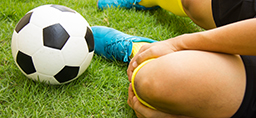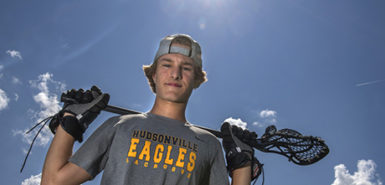
March is here and that means just one thing to those who love sports: March Madness.
The celebrated NCAA tournament marks its 79th anniversary this year. As you begin penciling in your brackets, consider this inventive approach from the NCAA: color-coordinated picks.
The sports world seems like one of those places where data reigns supreme, even when it’s a look at school colors. Statisticians track every conceivable aspect of the performance of teams and players, and there’s no shortage of historical analysis.
Medical researchers get in on the action, too.
A study out of Australia found that basketball players average 105 high-intensity efforts per game, with each effort averaging 14 seconds in duration. These efforts include anything from sprinting to backwards running to sideways shuffling.
It takes careful conditioning to avoid common injuries, although physical conditioning for basketball requires a different use of the body’s aerobic system.
The physical demands of a basketball game are similar to those of a runner’s interval workout involving 105 x 14-second repetitions with short recoveries of only 21 seconds.
The body needs to be well-prepared for these short bursts of stopping and starting.
Further, the muscles used for basketball are different than those used for fall sports such as football. In basketball, the athletes sprint, jump and cut on a hard surface, but in football it’s field turf or grass.
Strength and flexibility of the quadriceps and hamstrings, as well as proprioception (balance) and kinesthetic awareness (the body’s place in time and space) of the lower limbs, should be trained in preparation for the season.
Gear up
Part of injury prevention is having the right type of equipment.
For basketball, that starts with your feet.
The new LeBron James shoes or James Harden shoes may look cool, but are they the best choice for you? Do they accommodate your body type, including the arch in your foot, your foot width and running style?
Shoes made specifically for fashion may not be the best choice for function.
Unsupported arches can result in plantar fasciitis, a pain in the bottom of the foot. This occurs when the tissue connecting heal to toe is repeatedly overstretched. Further, if the arch is not supported it will change the mechanics of how your body works, which can cause knee or back pain.
Another common overuse injury in basketball is patellar tendonitis, or jumper’s knee.
The patella tendon is part of the pulley system that extends the knee. Repeated forceful landing from jumping, as well as the start-stop mechanisms in basketball, place quite a load on the tendon that attaches your thigh muscle to the upper part of the lower leg. Stretching, strengthening and training can help alleviate some of the risk.
Hand injuries
At the other end of the body, a few common hand injuries seen in basketball are the boutonniere deformity, mallet finger, Jersey finger.
The boutonniere deformity comes at the middle joint of your finger and is a result of tearing the tendon that straightens your finger. This must be treated because it will not heal on its own.
Similarly, the mallet finger occurs at the joint on the end of the finger. It results in the same thing: an inability to straighten the tip of the finger. On the underside, or palm side, of the finger is where the flexor tendons lie.
A Jersey finger is a tear of the tendon that bends the finger.
These should be treated as soon as possible after the injury occurs. It’s not a medical emergency, but the sooner they are treated, the greater the chance of successful recovery.
 /a>
/a>
 /a>
/a>
 /a>
/a>